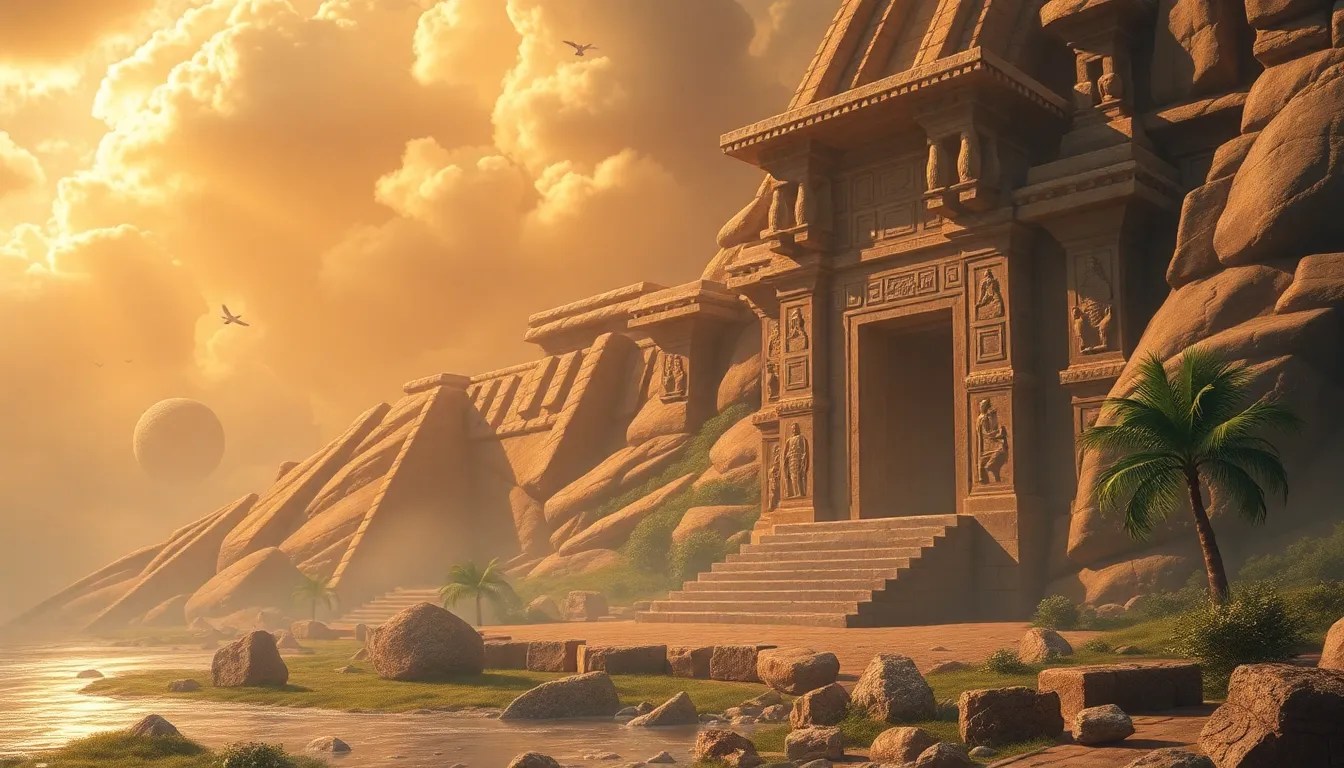The Atrahasis Epic: A Study of Environmental Themes
I. Introduction to the Atrahasis Epic
The Atrahasis Epic stands as one of the most significant works in Babylonian mythology, providing profound insights into ancient perspectives on humanity’s relationship with the environment. Dating back to the 18th century BCE, this epic showcases themes of creation, divine intervention, and the delicate balance between nature and humanity.
The narrative centers around Atrahasis, a wise man chosen by the gods, and unfolds the story of humanity’s creation, their subsequent overpopulation, and the divine response that leads to a catastrophic flood. The main characters include the creator god Enki, who is sympathetic to humanity, and Enlil, who grows increasingly frustrated with their numbers and noise.
Environmental themes are crucial in this epic, highlighting how ancient societies perceived the balance between human existence and the natural world, a perspective that remains relevant today.
II. The Creation of Humanity and the Environment
The Atrahasis Epic begins with the gods laboring to maintain their domains, growing weary of their toil. In response, they decide to create humanity to relieve them of their burdens. The motivations for creating humans are multifaceted, encompassing both convenience and the desire for companionship.
The relationship between humans and their environment is portrayed as symbiotic. The epic emphasizes that humans are tasked with caring for the earth, drawing sustenance from it while also being responsible for its stewardship. Nature’s bounty, such as fertile land and abundant water, sustains human life, illustrating the interconnectedness of all living things.
- Humans are seen as caretakers of the earth.
- The environment provides essential resources for survival.
- Balance is portrayed as crucial for harmonious existence.
III. The Role of the Gods in Environmental Balance
The gods in the Atrahasis Epic possess a divine perspective on environmental stewardship. They oversee the balance of nature, ensuring that the elements function harmoniously. However, their interactions with humans reveal a complex relationship where divine favor can easily shift to displeasure.
This interaction emphasizes the consequences of divine displeasure on the environment. When humans become too noisy and numerous, the gods, particularly Enlil, react negatively, leading to dire consequences for both humanity and the natural world.
- Divine favor is critical for environmental balance.
- Displeasure leads to natural disasters.
- The gods’ actions directly affect the human condition.
IV. Overpopulation and Its Consequences
The epic provides vivid descriptions of human overpopulation, illustrating how the burgeoning number of people leads to chaos and disruption. As humanity grows, so too does their impact on the environment, resulting in degradation of the earth’s resources.
Environmental degradation manifests in various forms, including depletion of natural resources, increased noise, and the destruction of ecosystems. The gods respond to these challenges by inflicting a flood upon humanity, showcasing their frustration and desire for balance.
- Overpopulation leads to resource depletion.
- Increased chaos and noise become unbearable for the gods.
- The flood serves as a divine response to human actions.
V. The Great Flood as an Environmental Catastrophe
The flood narrative serves as a pivotal moment in the Atrahasis Epic, symbolizing both destruction and renewal. It highlights the consequences of human actions on the environment and the necessity for balance. The flood is portrayed not merely as a punishment but as a cleansing force intended to reset the ecological balance.
Ecologically, the flood represents the fragility of the environment and the need for sustainable practices. The lessons from the flood emphasize that disregard for nature can lead to catastrophic consequences, underscoring the importance of balance and respect for the earth.
- The flood symbolizes destruction and rebirth.
- It serves as a warning against environmental negligence.
- Balance is essential for sustainability.
VI. The Role of Atrahasis as a Mediator
Atrahasis emerges as a pivotal character, representing humanity’s voice in the face of divine wrath. His relationship with the gods, particularly with Enki, showcases the importance of communication and mediation in resolving conflicts between humanity and the divine.
Atrahasis actively seeks to maintain balance between humanity and the gods, advocating for the needs of his people while also recognizing the authority of the divine. His role emphasizes the necessity of dialogue in environmental management, highlighting that understanding and cooperation are vital for harmony.
- Atrahasis is a mediator between humans and gods.
- His advocacy reflects the need for communication.
- He symbolizes the quest for balance in human existence.
VII. Modern Interpretations and Relevance
The Atrahasis Epic resonates with contemporary environmental issues, providing insights into modern ecological challenges. The themes of overpopulation, environmental degradation, and the necessity for balance are more relevant than ever in today’s world.
Insights from ancient mythology can inform modern environmental ethics, urging society to reflect on its actions and their impact on the planet. The epic’s narrative continues to influence current ecological narratives, reminding us of the longstanding connection between humanity and nature.
- Modern issues reflect themes from the epic.
- Ancient wisdom can guide contemporary ethics.
- The narrative influences current ecological discussions.
VIII. Conclusion
In conclusion, the Atrahasis Epic offers a rich exploration of environmental themes that are timeless in their relevance. It underscores the delicate balance between humanity and the natural world, emphasizing the consequences of neglect and the importance of stewardship.
The lasting legacy of the epic lies in its ability to inform our understanding of humanity’s relationship with nature, inviting us to recognize the wisdom of ancient texts as we navigate modern environmental practices. As we face pressing ecological challenges, the lessons from the Atrahasis Epic call us to action, urging a return to harmony with the earth.



